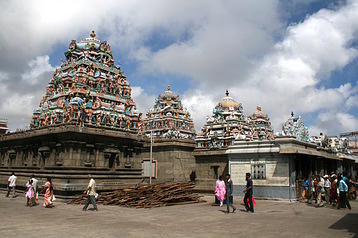
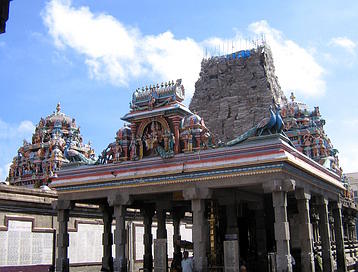
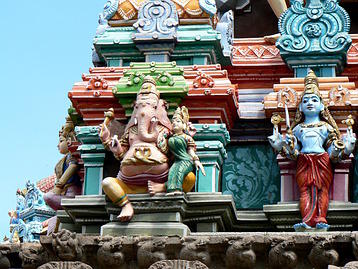
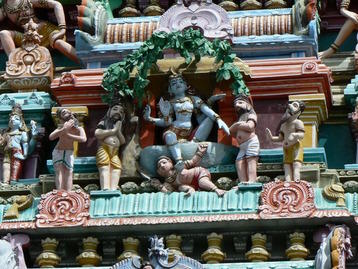
Chennai (formerly Madras) |
 |
 |
| Kapalishvara Temple, dedicated to Vishnu | See the scaffolding on the high tower? |
 |
 |
| Ganesh, the elephant god | This should be Vishnu, since he's blue |
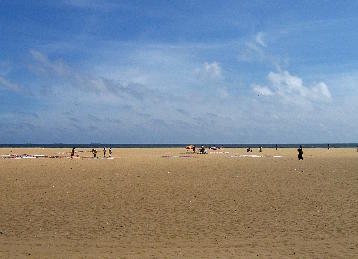 |
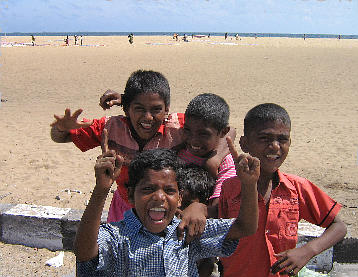 |
| Marina Beach, Chennai | Kids at Marina Beach |
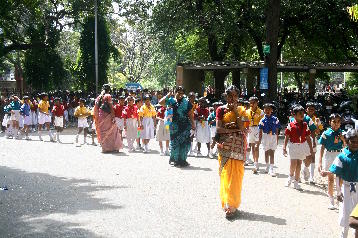 |
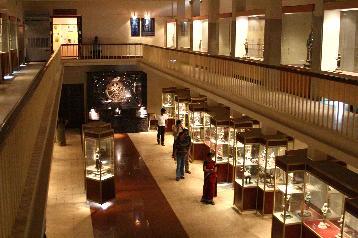 |
| School children visiting the Museum | The Bronze Gallery |
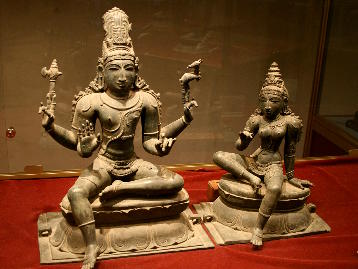 |
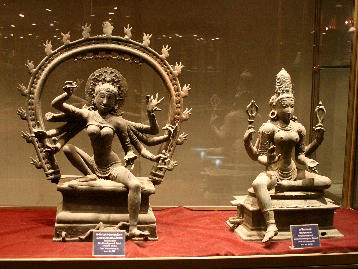 |
| Shiva and Parvati | Mahishasuramardini (left, about 10th century) and Maheswari (right, about 11th century) |
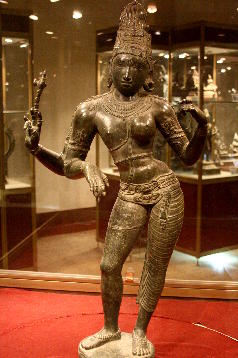 |
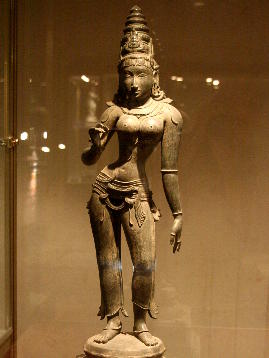 |
| Ardhanarishvara | Parvati (about 10th century) |
Back to home page/accueil or to India 2008 Tamil Nadu tour.